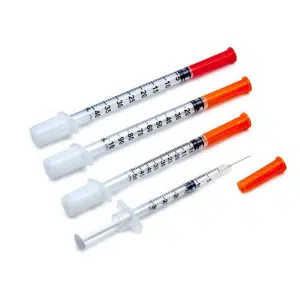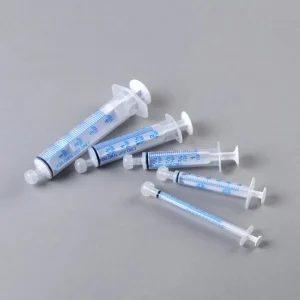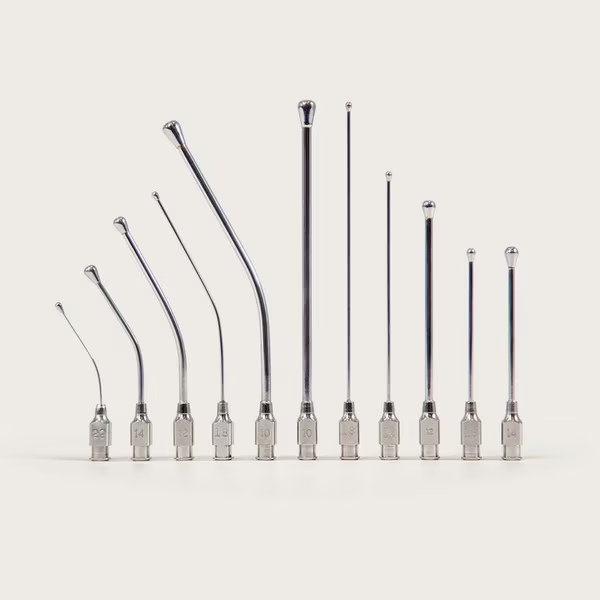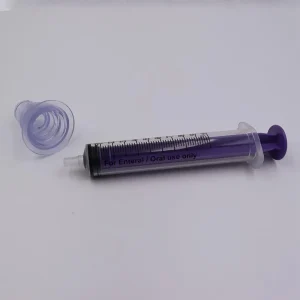In modern healthcare, syringes represent one of the most fundamental medical devices, undergoing tremendous transformation from simple to sophisticated, and from painful to comfortable experiences. This comprehensive guide explores the evolution of injection technology, from traditional syringe needles to cutting-edge needle-free innovations.
Foundation of Traditional Injection Systems
Syringe Needle: The Core Component of Medical Injection
The heart of traditional injection systems lies in the syringe needle – a seemingly simple yet highly sophisticated medical device. The design of injection needles requires careful consideration of multiple critical factors:
Material Requirements
- Medical-grade stainless steel construction ensuring biocompatibility and corrosion resistance
- Precision manufacturing with stringent quality control standards
- Surface treatments to minimize tissue damage and pain sensation
Geometric Design Precision
- Needle diameter, length, and bevel angle are precisely calculated
- Gauge numbering system where higher numbers indicate smaller diameters
- Specialized coatings to reduce friction and enhance patient comfort
This technical foundation allows healthcare professionals to select appropriate needle specifications based on specific medication requirements and patient needs.
Revolutionary Improvements in User Experience
Easy Touch Syringes: Making Injections More Comfortable
Easy touch syringes represent a significant breakthrough in traditional injection user experience. These syringes embody the philosophy of “making injections simple and comfortable,” featuring several key innovations:
Ergonomic Design Excellence
- Optimized grip handles conforming to natural hand curvature
- Anti-slip textured surfaces ensuring stable operation even in humid conditions
- Precisely calibrated plunger resistance for uniform injection force
Pain Minimization Technology
- Ultra-fine needle technology reducing skin penetration resistance
- Specialized needle coatings decreasing friction coefficients
- Optimized bevel designs facilitating easier skin penetration
Enhanced Safety Features
- Integrated safety locking mechanisms preventing accidental needle sticks
- Single-use design eliminating cross-contamination risks
- Clear graduated markings ensuring accurate dosage delivery
Specialized Injection Systems for Targeted Therapies
Insulin Injection System Specialization
Insulin Syringe 1ml: The Standard Tool for Diabetes Management
The insulin syringe 1ml represents the most common medical device in daily diabetes management. This specialized syringe design addresses the unique requirements of insulin therapy:
Scientific Volume Design
- 1ml capacity perfectly meets most patients’ daily insulin requirements
- Precise graduations to 0.01ml (1 unit) ensuring dosage accuracy
- Specialized U-100 scale design directly corresponding to insulin concentration units
Professional Characteristics
- Ultra-fine insulin needles typically ranging from 28-31G
- Needle lengths of 4-8mm optimized for subcutaneous injection
- Low dead space design minimizing medication waste
- Transparent syringe barrel facilitating drug visualization and air bubble detection
Syringe Safety Needle Cap: Critical Safety Innovation
The syringe safety needle cap serves as a crucial component of modern injection safety systems, particularly vital in scenarios requiring frequent injections like insulin therapy:
Multi-Layer Safety Protection
- Prevents accidental needle sticks through integrated locking mechanisms
- Prevents reuse with irreversible activation systems
- Effectively prevents cross-contamination by isolating used needles
User-Friendly Design Features
- Single-handed operation design convenient for patient self-injection management
- Visual safety indicators clearly showing activation status
- Ergonomic compliance ensuring intuitive and simple operation
Mounjaro Needle Size: Exemplifying Personalized Treatment
The Mounjaro needle size specifications exemplify modern medicine’s increasing emphasis on personalized treatment. As a GLP-1 receptor agonist for Type 2 diabetes treatment, Mounjaro’s injection system design fully demonstrates the precision of contemporary medical technology:
Scientific Needle Specification Selection
- Length selection: Typically 4-8mm, determined by patient body type and injection site
- Diameter specifications: Predominantly 30-32G ultra-fine needles maximizing pain reduction
- Material standards: Medical-grade stainless steel ensuring injection consistency
Precise Dosage Control
- Pre-filled design preventing medication errors
- Accurate dose adjustment mechanisms
- Visual medication windows facilitating dosage monitoring
Patient-Friendly Features
- Simple operation suitable for patient self-injection
- Humanized packaging convenient for transport and storage
- Comprehensive usage guidelines reducing operational complexity
Breakthrough Developments in Needle-Free Injection Technology
Needle Free Shock Syringe: Innovative Shock Wave Injection
Needle free shock syringe technology represents the latest advancement in injection methodology. This technology uses high-pressure shock waves to deliver medications directly through the skin, completely eliminating traditional needle limitations:
Working Mechanism
- Utilizes high-pressure gas or spring systems generating instantaneous high pressure
- Propels liquid medication at extremely high speeds (typically exceeding 100m/s)
- Creates fine liquid streams penetrating skin surface layers
Technical Advantages
- Completely painless: Eliminates needle puncture-associated pain
- Reduced infection risk: Needle-free design eliminates needle stick injury risks
- Uniform drug delivery: More even medication distribution in subcutaneous tissue
- Broad applicability: Suitable for vaccine administration, insulin injection, and various treatment scenarios
Needle Free Syringe: Comprehensive Needle-Free Injection Adoption
Needle free syringe technology is gradually gaining widespread adoption with expanding applications:
Vaccination Applications
- Particularly suitable for pediatric vaccinations, reducing fear psychology
- Improved vaccination efficiency ideal for large-scale immunization programs
- Reduced medical waste generation promoting environmental sustainability
Chronic Disease Management Applications
- Alternative to traditional insulin needle for diabetes patients
- Growth hormone deficiency long-term treatment
- Other conditions requiring frequent injections enhancing patient compliance
Aesthetic Medicine Applications
- Hyaluronic acid injections
- Botulinum toxin treatments
- Precise delivery of various cosmetic injectables
Future Development Trends and Outlook
Smart Integration
Modern injection technology is advancing toward intelligent integration:
- Integrated sensor technology for real-time injection process monitoring
- Mobile device connectivity for medication history recording
- AI-assisted dosage calculation and medication reminders
Enhanced Biocompatibility
- New material applications further reducing allergic reactions
- Surface modification technologies improving tissue compatibility
- Biodegradable material research and development
Personalized Customization
- Patient-specific needle specification customization
- Technical support for individualized medication protocols
- Genetic testing-guided precision medication delivery
Selection Guide: Choosing the Right Injection Method
Traditional Needle Injection Applications
- Large volume medication injections (exceeding 1ml capacity requirements)
- Deep intramuscular injection needs
- Intravenous administration scenarios
- Cost-sensitive medical environments
- Diabetes patients accustomed to insulin syringe 1ml systems
- Treatments requiring precise injection depth control
Needle-Free Injection Advantages
- Pediatric patients or individuals with needle phobia
- Frequent injection requirements (ideal alternative to traditional insulin needles)
- Large-scale vaccination applications
- Pain-sensitive treatment scenarios
- Environments requiring needle stick injury risk avoidance (eliminating need for syringe safety needle caps)
- Patient populations seeking enhanced injection experiences
Conclusion
The evolution from traditional syringe needles to modern needle-free technology exemplifies the continuous advancement of medical technology. Specialized insulin syringe 1ml systems and insulin needles provide precise treatment tools for diabetes patients, while syringe safety needle cap technologies significantly enhance usage safety. Easy touch syringes improve traditional injection comfort, while specialized Mounjaro needle size designs reflect personalized medicine development trends. The emergence of needle free shock syringe and needle free syringe technologies opens new possibilities for painless medical treatment.
Looking forward, as technology continues advancing, we have every reason to believe injection therapy will become increasingly precise, comfortable, and safe. Whether traditional needle injection or needle-free technology, their common goal remains providing patients with superior treatment experiences – the fundamental driving force behind medical technology development.
Selecting appropriate injection methods requires comprehensive consideration of medication characteristics, patient conditions, treatment requirements, and economic factors. Healthcare professionals and patients should understand different technology characteristics to make optimal choices, collectively advancing modern medical technology progress and application.





